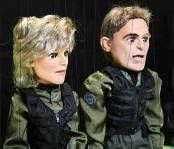From the Associated Press (via Yahoo News):
http://news.yahoo.com/s/ap/20070711/ap_on_sc/britain_galaxy_zoo;_ylt=ApH0b3oXaV1sWADRV2p_mDN4hMgF
Astronomers seek aid for galactic census
By RAPHAEL G. SATTER, Associated Press Writer
Wed Jul 11, 5:35 PM ET
LONDON - Scientists want Internet users to help them sort through an unusual digital photo album: pictures of about 1 million galaxies. In a Web statement Wednesday, astronomers asked for volunteers to help classify the galaxies, identifying them as either elliptical or spiral, and noting, where possible, in which direction they rotate.
It would the largest galactic census ever compiled, something scientists say would provide new insight into the structure of the universe.
"We're in the golden era of astronomy," said Bob Nichol, an astronomer at the University of Portsmouth, in southern England, who helped develop the "Galaxy Zoo" Web site where the photographs are posted. "We have more data than we can assimilate, and we need help."
Astronomers say computer programs have been unable to reliably classify the star systems. Without volunteers, it would take researchers years to wade through the photographs, which were taken automatically by a massive digital camera mounted onto a telescope at the Apache Point Observatory near Sunspot, New Mexico, Nichol said. With 10,000 to 20,000 people working to classify the galaxies, the process could take as little as a month.
Volunteers would sign on to the Web site, complete a brief tutorial, and pick through one galaxy after another.
The galaxies would be identified by several people to guard against errors, and scientists would rule on galaxies whose shape or spin was disputed by volunteers.
The catalog would help researchers understand how galaxies interacted and the way in which they formed, Nichol said, explaining that scientists still knew very little about galaxies beyond the fact that some were spiral-shaped while others were elliptical.
"It's a bit of like knowing that there are men and women in the world, but not knowing where they come from or how they're different," he said.
If the volunteers' data showed that galaxies close to each other spun in the same direction, for example, it would suggest that they were formed at the same time from a common source, a potential challengeto the current understanding of how galaxies — and the structure of the universe — came to be.
"At some level, what we learn about these galaxies could tell us something quite fundamental about cosmology and particle physics,"Nichol said.
The project was inspired by similar projects at NASA, such as Stardust(at)home, which enlisted the help of thousands of volunteers to sift through grains of space dust gathered during a 2006 mission. Another such program, SETI(at)home, taps volunteers' computer power to help scientists detect extraterrestrial radio signals.
Galaxy Zoo was developed by researchers from the University of Portsmouth and the University of Oxford in England, and Johns Hopkins University in Maryland.
___
On the Net:Galaxy Zoo: http://www.galaxyzoo.org/
Subscribe to:
Post Comments (Atom)



No comments:
Post a Comment